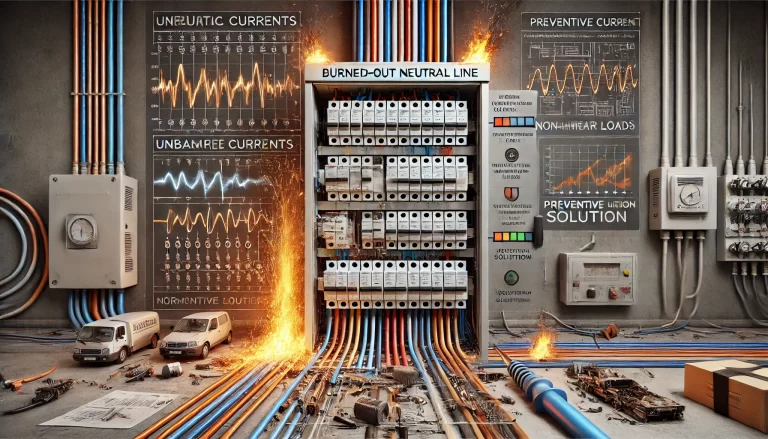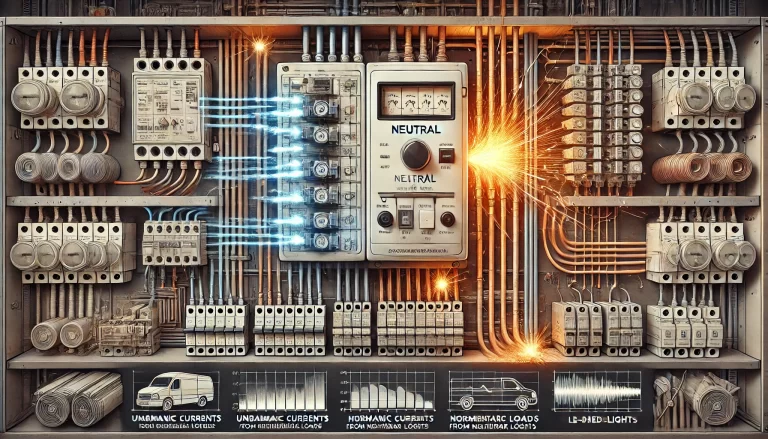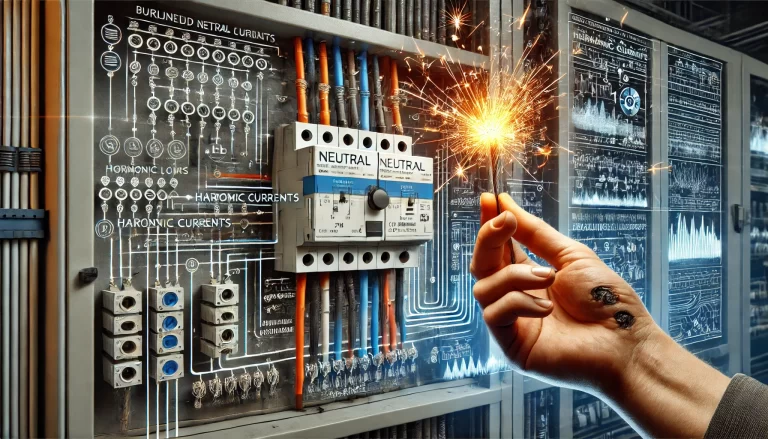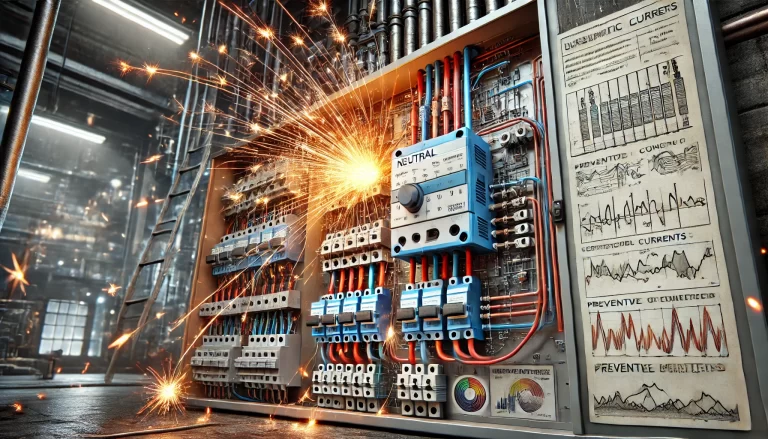The neutral line plays a critical role in electrical systems, acting as a return path for unbalanced currents in a multi-phase setup. However, a burned-out neutral line is a common issue that can disrupt operations, cause safety hazards, and damage electrical equipment. Understanding the causes and implementing preventive measures is essential for ensuring the reliability and safety of electrical systems. Below is a detailed exploration of the causes of neutral line burnout and strategies to mitigate the risks.
1. Excessive Current Leading to Overload
Cause:
Neutral lines are typically designed to carry the unbalanced current from a three-phase system. When the loads across the three phases are significantly unbalanced, the current in the neutral line can exceed its rated capacity. This is especially common in systems with a large number of single-phase loads, such as in residential or commercial settings.
Consequence:
An overloaded neutral line generates excessive heat, causing insulation to degrade and eventually leading to burnout.

2. Poor Connections or Loose Terminals
Cause:
Loose or poorly connected terminals in junction boxes, switchboards, or distribution panels can cause high resistance at the connection points. This resistance leads to localized heating when current flows through the neutral line.
Consequence:
The increased heat can melt insulation and burn the conductor at the connection points, potentially causing an electrical fire.
3. Short Circuits or Ground Faults
Cause:
Short circuits involving the neutral line and other conductors (such as live or ground wires) can introduce large amounts of current. Additionally, ground faults in equipment may lead to abnormal current flow through the neutral line.
Consequence:
The sudden surge of current during a short circuit can burn out the neutral line, leaving the system ungrounded and unsafe.
4. Undersized Neutral Line
Cause:
When designing an electrical system, if the neutral line’s cross-sectional area is not properly calculated to handle the expected load, it becomes prone to overheating. This issue is more pronounced in systems with high single-phase or harmonic loads.
Consequence:
An undersized neutral line quickly overheats under normal operating conditions, causing insulation breakdown and eventual failure.
5. Harmonic Currents
Cause:
Non-linear loads, such as computers, LED lighting, variable frequency drives (VFDs), and other electronic devices, generate harmonic currents. These harmonics add to the neutral current and can exceed the expected load on the neutral conductor.
Consequence:
Harmonic currents significantly increase the neutral line’s current, leading to overheating and burnout.

6. Faulty or Inadequate Grounding
Cause:
Improper grounding can cause leakage currents to flow through the neutral line instead of being safely diverted to the ground. This is often due to grounding faults or the absence of a proper ground path.
Consequence:
The neutral line may carry unintended currents, increasing its thermal and electrical stress and causing damage over time.
7. Lightning Strikes or Voltage Surges
Cause:
Lightning strikes or transient overvoltage events in the power grid can inject extremely high currents into the system. If the neutral line is not adequately protected, it can become a path for these surges.
Consequence:
The neutral line can be burned out or damaged by the sudden high current, potentially causing failure in connected equipment.
8. Aging and Environmental Factors
Cause:
Neutral conductors, like other components, degrade over time due to environmental factors such as heat, moisture, and mechanical wear. Insulation may become brittle, and conductor oxidation can increase resistance.
Consequence:
Degraded conductors are more prone to overheating, resulting in burnout or loss of functionality.

Prevention Strategies
1. Balanced Load Distribution
- Design and maintain systems to ensure balanced loads across all three phases.
- Regularly monitor the load distribution and adjust as needed to avoid overloading the neutral line.
2. Proper Neutral Line Sizing
- Calculate the cross-sectional area of the neutral conductor based on the expected load, including potential harmonic contributions.
- Consider upsizing the neutral line in systems with high harmonic loads.
3. Secure and High-Quality Connections
- Use high-quality connectors and ensure that all terminals are tightly secured.
- Periodically inspect and re-tighten connections to avoid looseness over time.
4. Install Harmonic Filters
- Use harmonic filters or active power conditioning devices to mitigate the effects of harmonic currents in systems with non-linear loads.
5. Ground Fault Protection
- Install ground fault circuit interrupters (GFCIs) and residual current devices (RCDs) to detect and isolate ground faults quickly.
6. Overload and Surge Protection
- Use overload protection devices, such as circuit breakers, to prevent excessive currents from damaging the neutral line.
- Install surge protectors to shield the system from lightning or voltage surges.
7. Routine Maintenance and Inspections
- Regularly inspect the condition of the neutral line and its insulation.
- Test the system periodically to identify and rectify grounding issues or load imbalances.
8. Use Quality Materials
- Ensure that conductors, insulation, and connectors meet industry standards and are suitable for the specific application.

Conclusion
Neutral line burnout is a preventable issue if the system is designed, installed, and maintained properly. The key is to balance loads, ensure secure connections, and protect the system from overloads, harmonics, and environmental degradation. By understanding the causes and implementing these preventive strategies, you can enhance the safety, reliability, and longevity of your electrical systems.
